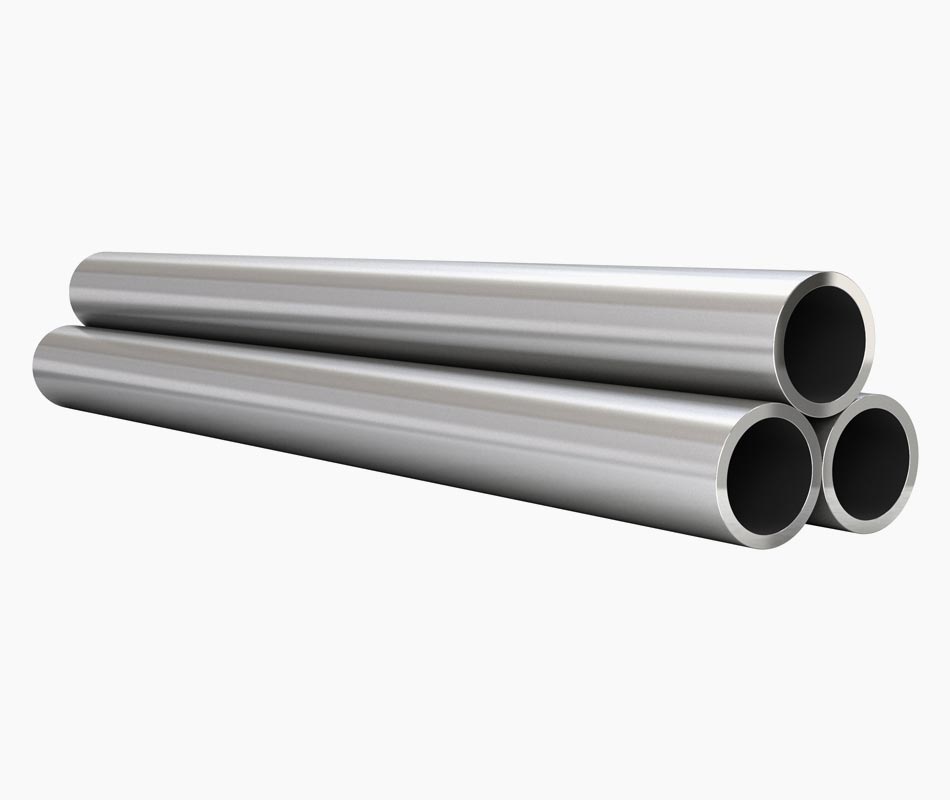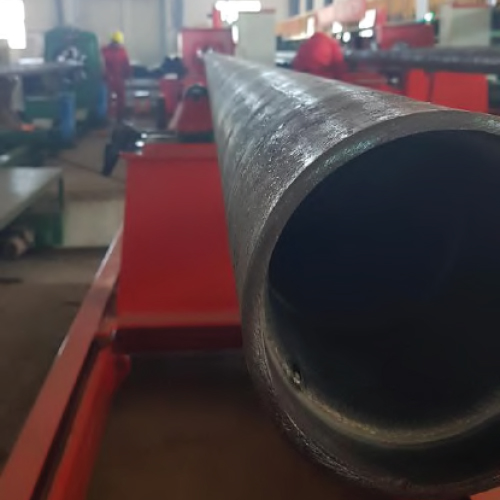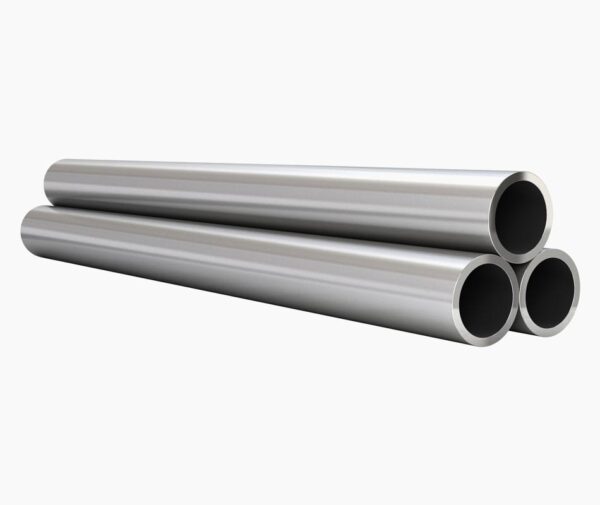Description
The stainless steel chemical formula constitutes a high amount of nickel content, majorly promoting its austenitic structure. It enhances the alloy’s strength and reinforces the grade with corrosion resistance under acidic conditions by restricting its corrosion rate in the active condition. The addition of copper specifically enhances the alloy’s corrosion resistance to certain acidic conditions. It also gives the grade better machining properties and formability.
The molybdenum addition in the grade balances the chemical composition. Apart from giving the grade its mechanical strength, it also gives the grade resistance to uniform as well as localized corrosion like pitting and crevice corrosion. The grade is non-magnetic due to its microstructure. The copper content also lowers work hardening and improves overall machinability. Hence, the grade can be suitably used at cryogenic temperatures. The grade does not have an element for stabilization of carbides at heat heat-affected zone but the grade, however, has a very low carbon content which prevents intergranular corrosion while working on the grade. The grade can suitably resist the formation of a ferrite phase since it has strong austenitic formers in its chemical composition.
It can also resist the sigma phase. Elevated temperatures are not suggested for this grade and its maximum service temperature remains around 440°C. In respect to this property, the grade may sometimes be sustained under severe and aggressive corrosion environments. 904L is widely used in process industries. Hot as well as cold work can be appropriately done on the grade. Hot working can be done at around 1100-1200°C, the process needs to be carried out in a uniform manner. Working on the grade at less than 980°C should be avoided for the grain structure might get distorted. After the complete hot working, the metal should be completely annealed to obtain maximum ductility and retain its corrosion resistance. Cold working can also be done with the use of higher forces.
Chemical Properties
| Grade | Ni | C | Cr | Mn | Si | P | Mo | S | Fe | Cu | N | |
| 904L | Min. | 23 | – | 19.0 | – | – | – | 4.0 | – | Bal.38.63 | 1.0 | – |
| Max. | 28 | 0.20 | 23.0 | 2.0 | 1.0 | 0.040 | 5.0 | 0.030 | – | 2.0 | 0.10 |
Physical Properties
| Density | 7.95 g/cm 3 / 0.285 lb/in 3 |
| Melting Point | 1315 -1390 (°C) / 2399 – 2534 (°F) |
| Specific Heat | 0.11 BTU/lb-°F (32 – 212°F) 450 J/kg-°K (0 – 100°C) |
| Thermal Conductivity @ 212°F | 6.8 BTU/Ft-hr-°F 12.9 W/m-°K |
| Elastic Modulus | 28.0 x 106 psi 190 GPa |
| Electrical Resistivity | 33.5 Microhm-in at 68°F 95.2 Microhm-cm at 20°C |
| Annealing | 1075 – 1125(°C) / 1965 – 2055 (°F) |
| Quench | Rapid Air/Water |
General Data
| Standard | 904L |
| UNS | NO8904 |
| WERKSTOFF NR. | 1.4539 |
| EN | X1NiCrMoCu25-20-5 |
| BS | 904S13 |
| KS | STS 317J5L |
| JIS | SUS 890L |
| AFNOR | Z2 NCDU 25-20 |
Standards Specifications
PIPES & TUBES
| Summary | Standards |
| Standard Specification for Seamless Ferritic and Austenitic Alloy-Steel Boiler, Superheater, and Heat-Exchanger Tubes | ASTM A213 |
| Standard Specification for Welded Austenitic Steel Boiler, Superheater, Heat-Exchanger, and Condenser Tubes | ASTM A249 |
| Standard Specification for Seamless and Welded Austenitic Stainless Steel Tubing for General Service | ASTM A269 |
| Standard Specification for Seamless, Welded, and Heavily Cold Worked Austenitic Stainless Steel Pipes | ASTM A312 |
| Standard Specification for Electric-Fusion-Welded Austenitic Chromium-Nickel Stainless Steel Pipe for High-Temperature Service and General Applications | ASTM A358 |
FITTINGS & FLANGES
| Summary | Standards |
| Standard Specification for Wrought Austenitic Stainless Steel Piping Fittings | ASTM A403 |
| Standard Specification for Forged or Rolled Alloy and Stainless Steel Pipe Flanges, Forged Fittings, and Valves and Parts for High-Temperature Service | ASTM A182 |
| Standard Specification for Factory-Made Wrought Nickel and Nickel Alloy Fittings | ASTM B366 |
Forms of Supply
Pipe and tubing, fittings and flanges, washers.
Corrosion Resistance
Though the grade was originally used in dilute sulphuric acids, the composition stability has made the grade quite useful in various acidic conditions with brilliant corrosion resistance. The high nickel-chromium content along with a good amount of copper and molybdenum provides the grade with exceptional localized corrosion resistance to pitting and crevice corrosion along with decent resistance to chloride stress corrosion. Although the use of the grade under a hydrochloric environment is limited, the nickel and molybdenum content makes sure to resist chloride stress corrosion cracking. The grade requires solution annealing after the cold-working process to retain its maximum stress corrosion cracking resistance.
Heat Treatment
The grade can be considerably solution annealed around 1050- 1175°C, followed by rapid cooling. The grade might get hardened by heat treatment and cold reduction.
Weldability
The grade can be readily welded by common fusion and electric resistance techniques. In the grade, the segregation of the alloying elements, after solidification is less evident, and hence maximum corrosion resistance is restored. It is welded with filler metal with a similar composition. Normally, pre-weld and post-weld heat treatments are not required. Hot cracking at the weld zone also needs to be taken care of.
Machining
The grade can be suitably machined with standard techniques. Positive feeds, slow speeds, and rigid tooling are required. Chip breakers might also be required. The bending can be carried out with a very small bending radius under proper cold working conditions and proper annealing.
Applications
Oil refinery components, seawater cooling devices, chemical processing equipment, gas scrubbing plants, wiring in electrostatic precipitators, pulp, and paper processing equipment, gas washing, condenser tubes, heat exchangers, control, and instrumentation.
Possible grade alternatives
GRADE INCOLOY 825
| Grade | Ni | C | Cu | Mn | Si | Cr | Fe | S | AI | Mb | Ti | |
| Incoloy 825 | Min | 38.0 | – | 1.5 | – | – | 19.5 | 22.0 | – | – | 2.5 | 0.6 |
| Max | 46.0 | 0.05 | 3.0 | 1.0 | 0.50 | 23.5 | – | 0.03 | 2.0 | 3.5 | 1.2 |
GRADE HASTELLOY C276
| Grade | Ni | C | Co | Mn | Si | Cr | W | S | V | Fe | P | Mo | |
| Hastelloy C276 | Min | Bal(50.99) | – | – | – | – | 14.5 | 3.0 | – | – | 4.0 | – | 15.0 |
| Max | – | 0.010 | 2.5 | 1.00 | 0.08 | 16.5 | 4.5 | – | 0.35 | 7.0 | 0.04 | 17.0 |



